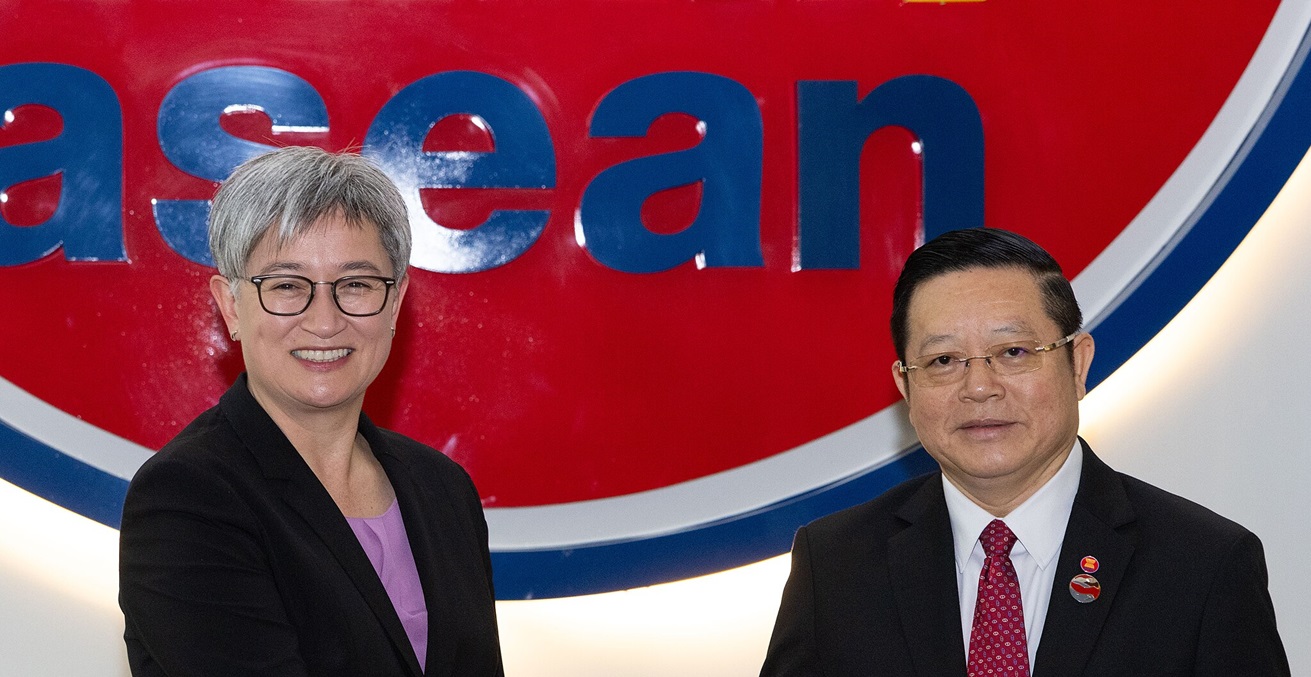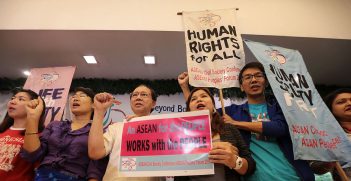The Big 50: Upgrading to an ASEAN-Australia Comprehensive Special Strategic Partnership

50 years into the relationship between ASEAN and Australia, the partnership needs to be expanded. Nowhere more is this needed than in renewable energy.
In 1974, under Prime Minister Gough Whitlam, Australia became the Association of Southeast Asian Nations’ (ASEAN) first dialogue partner. At the time, Whitlam famously described ASEAN as “unquestionably the most important, and the most relevant group” in Southeast Asia. In March, the 50th anniversary of the dialogue partnership between Australia and ASEAN will be celebrated at the ASEAN-Australia Special Summit in Melbourne.
Looking beyond this anniversary, one can see that Southeast Asia has become integral to Australia’s economy and its diverse social tapestry. In fact, 4.5 percent of Australians are of Southeast Asian heritage, predominantly from Vietnam, Indonesia, the Philippines, Malaysia, Cambodia, Thailand, and Singapore. Moreover, according to recent figures, ASEAN accounts for nearly 15 percent of Australia’s overall trade. This is greater than Australia’s bilateral trade with Japan, the US, or the European Union. In 2022, Australia’s two-way investment with the Association was worth AUD$289.7 billion.
Despite ASEAN’s importance to Australia’s modern economy, Canberra’s economic engagement with Southeast Asia has not kept pace with the growth of ASEAN economies. Since coming to power in 2022, the Albanese Government has recognised this reality and has made the strategic partnership with the grouping a key pillar of its foreign policy. The centrepiece of the government’s engagement with ASEAN is Australia’s “Southeast Asia Economic Strategy to 2040.” Launched in September 2023, a key pillar of the strategy is to expand Australian investment across Southeast Asia, particularly in key sectors like the growing clean energy sector. The strategy has identified this sector as an opportunity for economic growth in the ASEAN-Australia partnership. Besides celebrating 50 years of the ASEAN-Australia dialogue partnership at next month’s Special Summit, Albanese can add significance to the occasion by beginning the process of elevating the relationship to a “special strategic partnership.”
Since its humble beginnings 50 years ago, the ASEAN-Australia partnership has gained in strength. In 2010, the ASEAN-Australia-New Zealand Free Trade Agreement (AANZFTA) came into effect. And, in 2021, the ASEAN-Australia relationship was elevated to a “strategic comprehensive partnership” (CSP). Under the CSP, Australia reiterated its cooperation with ASEAN through three new “Australia for ASEAN” (Aus4ASEAN) initiatives – the Aus4ASEAN Futures Initiative, 100 Aus4ASEAN Scholarships, and the Aus4ASEAN Digital Transformation and Future Skills.
The ASEAN-Australia economic relationship was further strengthened through the Regional Comprehensive Economic Partnership (RCEP). Coming into effect in 2022, the RCEP is the world’s largest trading bloc, and includes Australia and all ten ASEAN member states. Additionally, just recently, the AANZFTA was upgraded and now includes a new chapter on trade and sustainable development. The chapter more broadly facilitates economic cooperation between ASEAN and Australia in the areas of climate change, energy, and the green economy.
As part of a new ASEAN-Australia Comprehensive Special Strategic Partnership (CSSP), the first ASEAN-Australia study centre in Canberra could be established through a public-private partnership between the Department of Foreign Affairs and Trade’s (DFAT) Australia-ASEAN Council (AAC) and an Australian university. This university could be the Australian National University or Monash University. In 2022, Monash University became the first foreign-owned university to establish an in-country campus in Indonesia.
Of course, the idea of an ASEAN-Australia study centre isn’t a new one. In 2017, while in opposition, the Australian Labor Party committed to opening an ASEAN Studies Centre with the plan that this would deepen and institutionalise the ASEAN-Australia relationship further. One of the centre’s primary objectives will be to drive educational and cultural engagement with ASEAN countries and to expand Southeast Asian language learning in Australian schools and universities. In recent years, Southeast Asian language programs, especially Indonesian, have declined precipitously in Australia.
Southeast Asian specialists like Kathleen Turner have long argued that Australia’s ongoing language deficit is a threat to its role in both ASEAN and global markets. Ironically, Australia’s Asian Century White Paper identified that Australians don’t have language skills equivalent with Canberra’s growing economic interests in its primary international markets, like Asia. An improvement in Southeast Asian language programs in Australia will no doubt strengthen the nation’s long-term economic and business engagement with ASEAN countries.
Another way Canberra could boost its economic engagement with ASEAN is through a dedicated renewable hydrogen agreement between the two parties, something along the line of an ASEAN-Australia Renewable Hydrogen Partnership. In the coming years, Southeast Asia’s demand for clean energy will increase substantially. Today, almost the entirety of the hydrogen supplied to Southeast Asia is based on natural gas. Growing electrification in Southeast Asia will reduce the region’s energy security risks, currently arising from fossil fuel supply chains like natural gas. It is estimated that the region will need approximately 454 gigawatts of new electricity generation by 2050, with 60 percent of this being derived from renewables. This would see an estimated investment of AUD$ 640 billion in hydropower, solar, and wind projects by 2030.
The Albanese Government has sought to make Australia a renewable energy superpower in the coming years. This includes a commitment of AUD$2 billion to its “Hydrogen Headstart” program, which aims to make Australia a leading global hydrogen producer by fast-tracking renewable hydrogen projects. Promisingly Australia has the highest number of planned renewable hydrogen projects in the world and, in 2022, made the world’s first shipment of liquefied hydrogen to Japan.
The new hydrogen deal will unlock the potential for Australia to support ASEAN in its energy transition. This will give Australia a competitive advantage in Southeast Asia through the export of renewables, clean energy expertise, and associated technology to the region. Australia has the technology and expertise to assist Southeast Asia in its growing demand for renewable hydrogen energy, and DFAT’s consultations in Southeast Asia have shown that ASEAN countries are very keen to tap into Australia’s technical expertise and experience in renewable hydrogen energy.
Ultimately, a new CSSP will more firmly institutionalise the special relationship between Australia and ASEAN, and broaden Australia’s cultural, educational, and economic relationship with the partner nations. Amid growing unpredictability, a solid partnership between Australia and ASEAN will contribute to stability.
Ridvan Kilic is a recent graduate of the Master of International Relations course at La Trobe University. He is a Diploma of Indonesian student at Deakin University. His research interests include the Australia-Indonesia bilateral relationship, Indonesian foreign, defence, and trade policy, ASEAN, and the Indonesian diaspora community. Ridvan’s primary focus is Indonesia, Australia, ASEAN regionalism, and the Indo-pacific.





